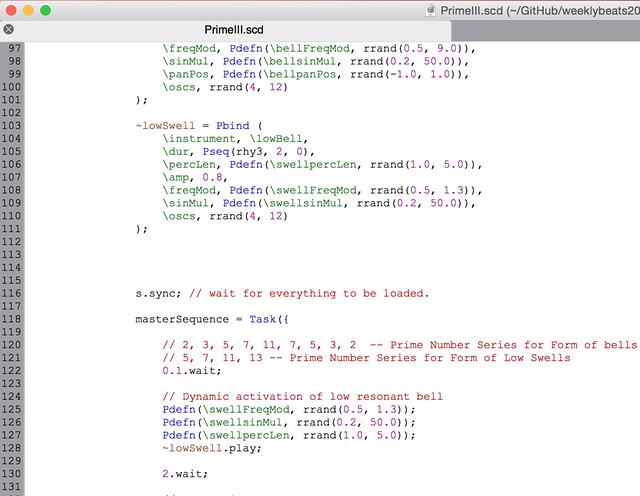Prime III
By fc on February 6, 2016 12:54 am
I'm quite proud of this one, the third SuperCollider study. Massive thanks to Kevan Atkins for (re-)posting his Inharmonicity Study I, which proved to be instructive in task scheduling and in being able to modify arguments within a sequence.
This piece is based on Prime Numbers (almost) completely. The rhythms (and durations) of the percussion impulses are derived from some higher prime numbers (divided by 1000), while the rhythms of the low sounds are derived from the low numbers (2, 3, 5, ..., 11). The sequencing of sounds to create the form is also based on the lower prime numbers, at least as much as I could figure out without creating two separate sequences (which might be next on my list).
You can have a look at the source here: SuperCollider source file
To do in the future:
- Still not satisfied with panning system. Will have to look into that in more detail.
- Still have not figured out how to implement non-CPU intensive audio effects such as reverb. Not such a big issue though.
Thanks to everyone who has been commenting on the previous two SC studies. I think I might have one more Prime number pieces in me, then perhaps an EP of them all.
Post-composition done in Audacity - compression and reverb.
 primeiii by Vincent Giles, on Flickr
primeiii by Vincent Giles, on Flickr
Audio works licensed by author under:
CC Attribution Noncommercial No Derivative Works (BY-NC-ND)
